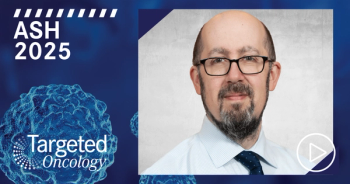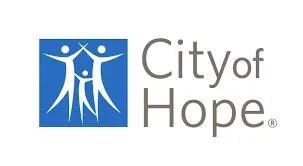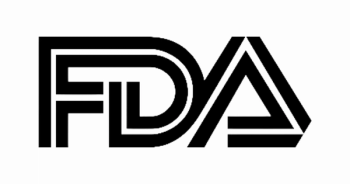
Balstilimab Plus Botensilimab Shows Better Response in MSS mCRC

Key Takeaways
- The combination of balstilimab and botensilimab improved objective response rates in MSS mCRC without liver metastases compared to botensilimab alone.
- Botensilimab at 75 mg with balstilimab achieved a 19% confirmed objective response rate, the highest among the study arms.
Marwan G. Fakih, MD, discussed the implications of the findings from the phase 2 study for patients with microsatellite stable metastatic colorectal cancer without liver metastases.
The combination of balstilimab with botensilimab led to a better objective response rate (ORR) vs that seen with botensilimab alone when used for the treatment of patients with microsatellite stable (MSS) metastatic colorectal cancer (mCRC) without liver metastases, according to preliminary findings from a phase 2 study (NCT05608044).1
Data from the global phase 2 study were presented at the
Patients were randomly assigned to 1 of 5 arms: botensilimab monotherapy at 75 mg Q6W (ITT, n = 38; safety, n = 37);botensilimab at 75 mg every 6 weeks (Q6W) plus balstilimab at 240 mg every 2 weeks (Q2W; ITT, n = 62; safety, n = 62);botensilimab monotherapy at 150 mg Q6W (ITT, n = 40; safety, n = 39);botensilimab at 150 mgQ6W plus balstilimab at 240 mgQ2W (ITT, n = 61; safety, n = 60); or standard-of-care (SOC) trifluridine/tipiracil (Lonsurf) or regorafenib (Stivarga; ITT, n = 33; safety, n = 21).
At a median follow-up of 12.7 months (range, 1.6-19.7), the combination of botensilimab at a dose of 75 mg Q6W with balstilimab (n = 62) showed a confirmed objective response rate (cORR) of 19% (95% CI, 10%-31%). The disease control rate (DCR) in this group was 55% (95% CI, 42%-68%).
Botensilimab at a dose of 150 mg Q6W plus balstilimab (n = 61) led to a cORR of 8% (95% CI, 3%-18%) at a median follow-up of 12.9 months (range, 0.1-20.6). The DCR in this arm was 54% (95% CI, 41%-67%).
As a monotherapy, botensilimab 75 mg Q6W (n = 38) and 150 mg Q6W (n = 40) showed cORRs of 0% (95% CI, 0%-9%) and 8% (95% CI, 2%-20%), respectively, and the DCRs were 37% (95% CI, 22%-54%) and 38% (95% CI, 23%-54%) at these dosages. The median follow-up in those arms was 9.8 months (range, 0.6-17.7) and 13.4 months (range, 0.7-21.1), respectively. Additionally, the median duration of response has not been reached, and 70% of responses are ongoing.
“The primary end point is overall response rate, and I think we showed activity. Interestingly, this was in line with the data and results that were published in Nature Medicine in the large phase 1 trial with this combination, where the overall response rate was 23%, so I think it is confirmatory that the combination is effective,” Marwan G. Fakih, MD, said in an interview with Targeted Oncology.
In the interview, Fakih, professor in the Department of Medical Oncology & Therapeutics Research, co-directs the Gastrointestinal Cancer Program at City of Hope Comprehensive Cancer Center, discussed the implications of these findings from the phase 2 study for patients with MSS mCRC without liver metastases.
Targeted Oncology: Can you provide an overview of the study design and rationale that you discussed at this year’s ASCO GI?
Fakih: We presented the results of a randomized phase 2 clinical trial of botensilimab and balstilimab in different combinations, either monotherapy or in combination, and we compared that to a standard-of-care arm. This is a 5-arm trial, multicenter, and the main purpose of this study was to answer the question: what does balstilimab, which is a PD-1 inhibitor, add to botensilimab, which is a CTLA-4 inhibitor? We also tried to answer the question, is there an optimal dose with botensilimab in that? It is a randomized phase 2 clinical trial with 5 arms, and the study was in patients with metastatic colorectal cancer who have microsatellite stability and have progressed on prior standard chemotherapy.
What were the key preliminary findings from the study?
The main endpoint of this study was overall response rate. What we found is that botensilimab plus balstilimab was effective in substantially reducing the tumor burden in patients. The overall response rate was 19% in patients who received both botensilimab/balstilimab with botensilimab at 75 mg every 6 weeks for up to 4 doses, and balstilimab at 40 [intravenously] every 2 weeks for up to 2 years. This was the highest response rate in the 5 arms that we tested.
We also found that the combination at the higher dose of botensilimab, 150 mg, was associated with responses, but that was a little lower at 8%. Interestingly, the disease control rate, which is the combination of objective response and stable disease, was similar for the combination arm. The main result is that the highest response rate is with the lower dose of botensilimab 75 mg in combination with balstilimab, and we also found that when we gave botensilimab alone at the same dose level of 75 mg, we did not see objective responses, which confirms the contribution of both agents, meaning that you do need both agents together to get the best outcome.
The primary end point is overall response rate, and I think we showed activity. Interestingly, this was in line with the data and results that were published in Nature Medicine in the large phase 1 trial with this combination, where the overall response rate was 23%, so I think it is confirmatory that the combination is effective. The other secondary end points were progression-free survival and overall survival. Those results are still being monitored and followed. They have not fully matured, but we did report that in our responders on this study, 70% continue to be without evidence of progression, and the median duration of response has not been met, indicating that the treatment is not only effective in shrinking the tumors and maintaining disease stability but that, in those patients who have a good response, it appears to be durable. Of note, the disease control rate on the combination arms was approximately 54% to 55% of patients, meaning more than half of the patients did benefit from the combination arm.
What are the next steps for the clinical development of this combination? Are there plans for larger trials to validate these findings further?
The next step is to have a confirmatory trial to prove that this combination is better than best supportive care. Of interest is the fact that we did have a control arm in the study that we reported on, and that was the standard arm of trifluridine or regorafenib, but only 21 patients enrolled in that arm, and partly because some patients who were randomized to this arm actually dropped off before receiving treatment. In the 21 patients who received trifluridine in our trial, there were no responses. As expected, the response rate for trifluridine as monotherapy is historically about 2% to 3%, and regorafenib is only a 1% response rate, so those agents do not really result in major shrinkage.
We do believe that if we go to a phase 3 clinical trial, it will hopefully be positive, but it will be required by regulatory bodies, and the goal is to proceed with a randomized phase 3 clinical trial with an overall survival end point to confirm beyond doubt the benefits that we see in our phase 2.
For a community oncology audience, what are the key takeaways from this research?
I think the key takeaway is that immunotherapy can work in patients with microsatellite stability. A CTLA-4 inhibitor is essential to drive the response rate here, but at doses of CTLA-4 with associated manageable toxicities, it is very beneficial to have a PD-1 inhibitor along. I think the other key takeaway is that not all CTLA-4 inhibitors are created equal. This is the first large phase 2 clinical trial to mature and report on the combination of CTLA-4 and PD-1 without any other agent to have such a high response rate. These results have not been shown previously with other combinations like tremelimumab [Imjudo] plus durvalumab [Imfinzi], which is a CTLA-4 and PD-L1 inhibitor.
I think this essentially drives the point that more potent CTLA-4 inhibitors, namely here an Fc-enhanced fragment CTLA-4 inhibitor, bring these results and bring hope to our patients, especially with the durability. This is a third-line available option, and third-line treatments have associated poor progression-free survival (PFS), with 1-year PFS rates of less than 20%. With trifluridine, about 40% of patients are without progression at 6 months, but it is substantially lower with other treatments. These results suggest more durable responses. Look out for the phase 3 trial once it is activated; we hope that patients will be referred to that study. I think this is cementing a role for CTLA-4 in microsatellite stable colorectal cancer.









































